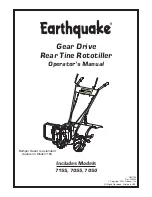
48 / 97
83000102.Ko
6.2.11.
Hydraulic installation
The system designer is responsible for choosing the material and the cross-section of the hydraulic
connections between the chiller and the application. Other dependent factors include the accepted pressure
loss in the connection lines and the available pump pressure. When designing the connections attention
must also be paid to the minimum flow rate to be maintained and sufficient resistance to the maximum pump
pressure.
At ambient temperatures < -25 °C install pipe trace heating (on site by customer).
To prevent frost damage, never switch off or disconnect the chiller from the power supply at ambient
temperatures < -25°C. If necessary, set the chiller to standby mode.
Ensure that you always comply with the requirements with regard to the operating fluid and the mix ratio
The insulation of the hydraulic pipes, connections and fittings installed by the customer must be vapour
diffusion-tight in accordance with the regionally applicable standards and regulations.
It must also be ensured during the hydraulic installation that the device connections available on the
refrigeration machine do not provide a fixed point. In order to avoid damage to the piping and refrigeration
machine, the hydraulic connections must be supported close to the device connections by the customer.
6.2.12.
Flushing the cold water circuit
Contamination of external pipes and components can damage the chiller. Before the chiller is connected
hydraulically with the cold water circuit this must be flushed several times. If there are dirt traps in the cold
water circuit they must be cleaned after the flushing.
6.2.13.
Filling
Once the hydraulic installation of the overall system has been completed, the chiller can be filled. All shut-off
valves in the cold water circuit must be opened.
In the standard version the machine does not have a filling connection. To fill the system, provide a filling
connection in the process circuit. If an external tank is installed in the process circuit, fill your system directly
in this tank.
ATTENTION! Galvanised pipes must not be used if water-glycol mixtures are used!
Formation of decomposition products, which result in silting up of the system!
ATTENTION! Only use approved refrigerants see Chapter 2.18! If there is a risk of
frost, note
Chapter 11 Taking out of service!
All operating liquids must be mixed before they are added to the system!
















































